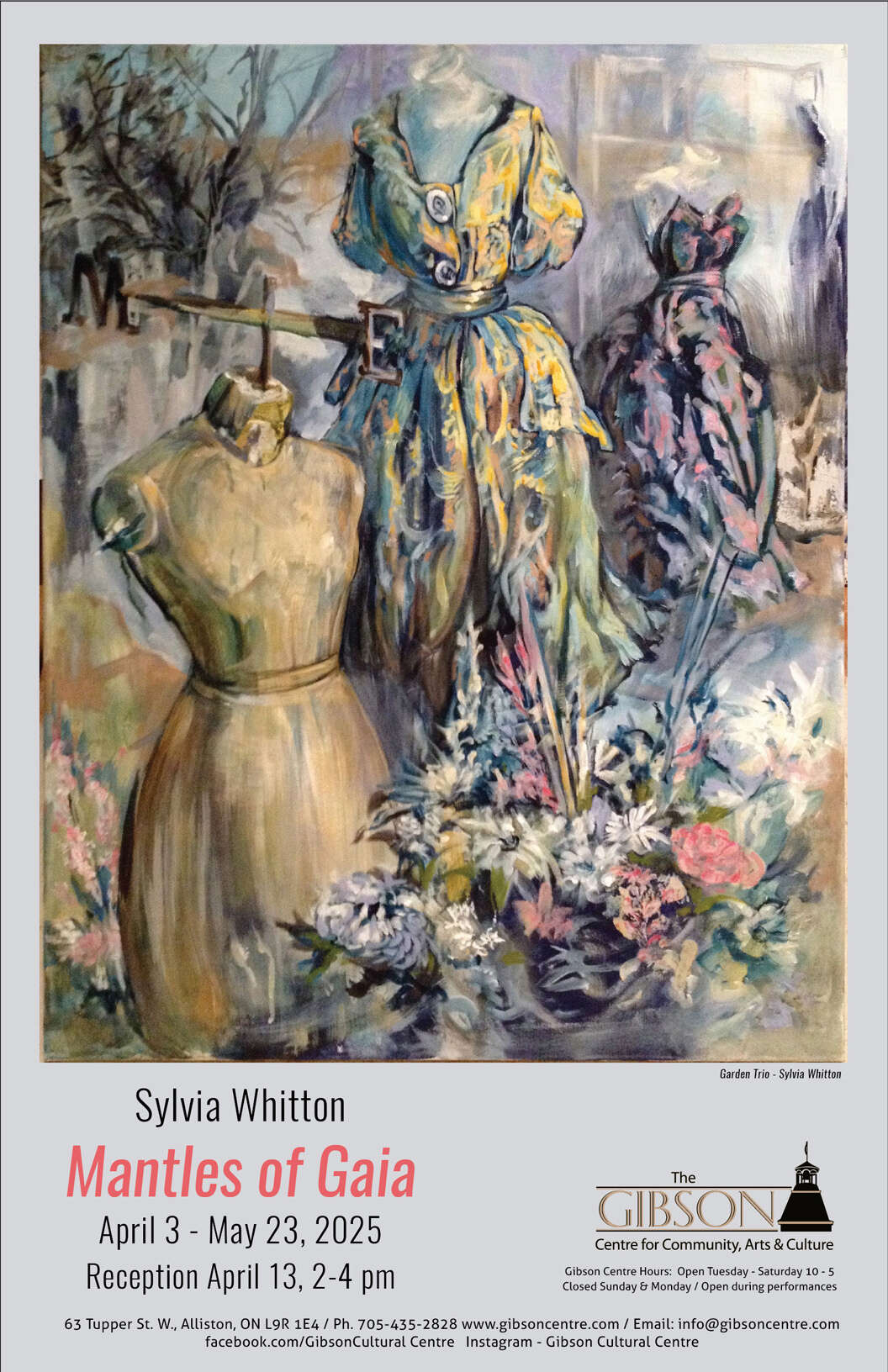63 Tupper St W, Alliston, ON L9R 1E4

Mantles of Gaia
Apr 3, 2025 - May 23, 2025
MANTLES OF GAIA
The Earth constantly moves her mantle, often carrying parts of her skirts to the surface, revealing her 5 billion year histories to those who can read them.
The mantels we don are also revealing of our own micro-histories on Earth, reflecting our own movements across this greater mantel, and embedding our own stories in its topmost layer.
This exhibition will explore the intersection of Earth's coverings and a poetic interpretation of Dress, which, over 35 years has become the shorthand of my thoughts and experiences of womanhood in my personal passage across the Great Mantle.
Sylvia Whitton's landscape painting derives primarily from her plein air experiences in Ontario, but the gestural sensibilities of land in her figurative Dress narratives are also sourced from travel and work in Canada, Europe, Britain, and China. Childhood memories of a farm in the Beaver Valley, in the Grey Bruce region, is the wellspring that waters the roots of her whole creative endeavour, with Alliston as an embedded name in those journeys to and from this early haven.
Following graduation from The Ontario College of Art, Whitton spent thirteen years as a professional scenic artist for the Canadian Opera Company, which contributed to her extensive knowledge of mixed media applications. This large-scale work led to private and public mural commissions.
Her work has been exhibited and resides in collections, provincially, but also in Seoul, S. Korea, and in China at the Guan Shanyue Art Museum, Shenzhen; and the Museum of Fine Art, Kaiping. Whitton was an invited lecturer at the Shanghai International Studies University (SISU) in 2012.
Sylvia Whitton is an Associate Professor in the Faculty of Art, at OCAD University, Toronto, where she has taught drawing and painting at all levels, specializing in figuration, alternative media and colour, both theory and practicum.
_____________________________________________________
